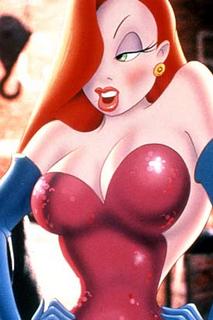
A snaggle-toothed, furry creature with a bald face and a rat’s tale has mystified natives in northern Ontario, but they have a name and a history for it.
“The elders used to see it a long time ago,” the manager of Sam’s Store in Big Trout Lake told the Star on Friday.
“No one has seen one for 40 years or so. The elders have a word for it: omajinaakoos. In English, it means ‘the ugly one’.”
Two Health Canada nurses training at the Kitchenuhmaykoosib Band reserve south of Hudson’s Bay said their dog Sam hauled out the 30-centimetre creature it found in early May floating face down near the causeway on the reserve, band spokesman Darryl Sainnawap told the Star.
“It looks like a mixed breed of an otter and a beaver,” he said. “We’re just as curious as everyone to find out what it is.”
One band member, 65-year-old John McKay, said he remembered his grandfather talking about such a creature that “feeds on beavers and otters.” Sainnawap’s 80-year-old grandfather had never seen anything like it, though.
Other elders “think it could be a messenger for bad news,” he said. “We’ll see.”
The discoverers threw it back in the water, thinking it was a commonly found northern Ontario beast, Sainnawap said.
The nurses themselves have been posted elsewhere, and staff at the nursing station won’t talk. “We work for the federal government,” said one. “We’re under a gag order.”
Sainnawap rejected speculation that it could be a man-made hybrid created for pictures.
“We don’t play God here.”
Nor would the nurses, he said. “It’s got to have a mother and father out there, so one day we will find out what it is.”
Cryptomundo.com, a site devoted to “elusive and rare animals,” has done an analysis of various small animals’ skulls, with the muskrat seeming a close match—although the nasty teeth were judged un-muskrat-like.
Others speculate it may be the mythical Ogopogo, the Chupacabra or some other marine monster, like the Loch Ness Monster.
“But more realistic considerations have talked about it being a known species, such as a bear cub (Ursus americanus) or other animals. Even the mundane looks strange without hair,” Loren Coleman at Cryptomundo said.
“The other top candidate is that of the North American river otter (Lontra canadensis).”
A New Zealand zoologist examined the teeth, whiskers and paws and decided:
“I think this is just another variation of an ordinary creature sculpted by the action of decomposition by water, as I demonstrated last year with the Gisbourne New Zealand Monster that was actually a drowned Opossum.”
“The elders used to see it a long time ago,” the manager of Sam’s Store in Big Trout Lake told the Star on Friday.
“No one has seen one for 40 years or so. The elders have a word for it: omajinaakoos. In English, it means ‘the ugly one’.”
Two Health Canada nurses training at the Kitchenuhmaykoosib Band reserve south of Hudson’s Bay said their dog Sam hauled out the 30-centimetre creature it found in early May floating face down near the causeway on the reserve, band spokesman Darryl Sainnawap told the Star.
“It looks like a mixed breed of an otter and a beaver,” he said. “We’re just as curious as everyone to find out what it is.”
One band member, 65-year-old John McKay, said he remembered his grandfather talking about such a creature that “feeds on beavers and otters.” Sainnawap’s 80-year-old grandfather had never seen anything like it, though.
Other elders “think it could be a messenger for bad news,” he said. “We’ll see.”
The discoverers threw it back in the water, thinking it was a commonly found northern Ontario beast, Sainnawap said.
The nurses themselves have been posted elsewhere, and staff at the nursing station won’t talk. “We work for the federal government,” said one. “We’re under a gag order.”
Sainnawap rejected speculation that it could be a man-made hybrid created for pictures.
“We don’t play God here.”
Nor would the nurses, he said. “It’s got to have a mother and father out there, so one day we will find out what it is.”
Cryptomundo.com, a site devoted to “elusive and rare animals,” has done an analysis of various small animals’ skulls, with the muskrat seeming a close match—although the nasty teeth were judged un-muskrat-like.
Others speculate it may be the mythical Ogopogo, the Chupacabra or some other marine monster, like the Loch Ness Monster.
“But more realistic considerations have talked about it being a known species, such as a bear cub (Ursus americanus) or other animals. Even the mundane looks strange without hair,” Loren Coleman at Cryptomundo said.
“The other top candidate is that of the North American river otter (Lontra canadensis).”
A New Zealand zoologist examined the teeth, whiskers and paws and decided:
“I think this is just another variation of an ordinary creature sculpted by the action of decomposition by water, as I demonstrated last year with the Gisbourne New Zealand Monster that was actually a drowned Opossum.”














